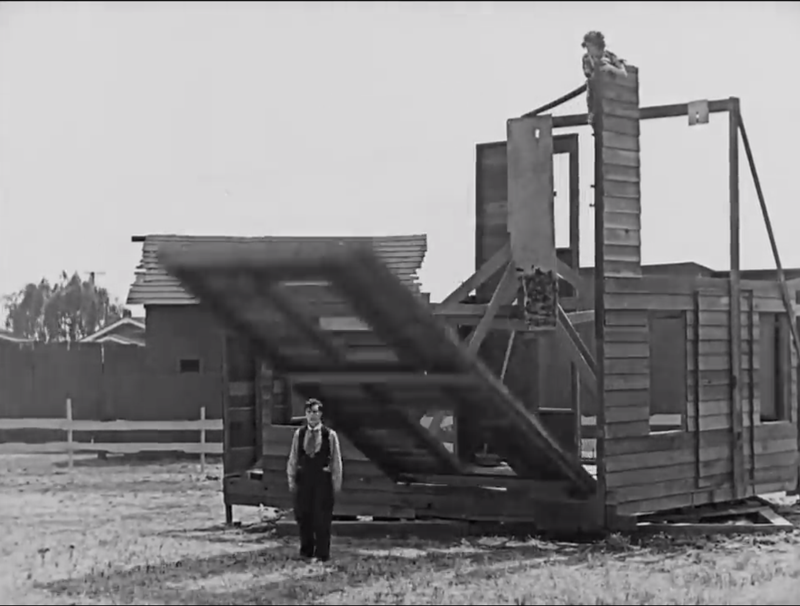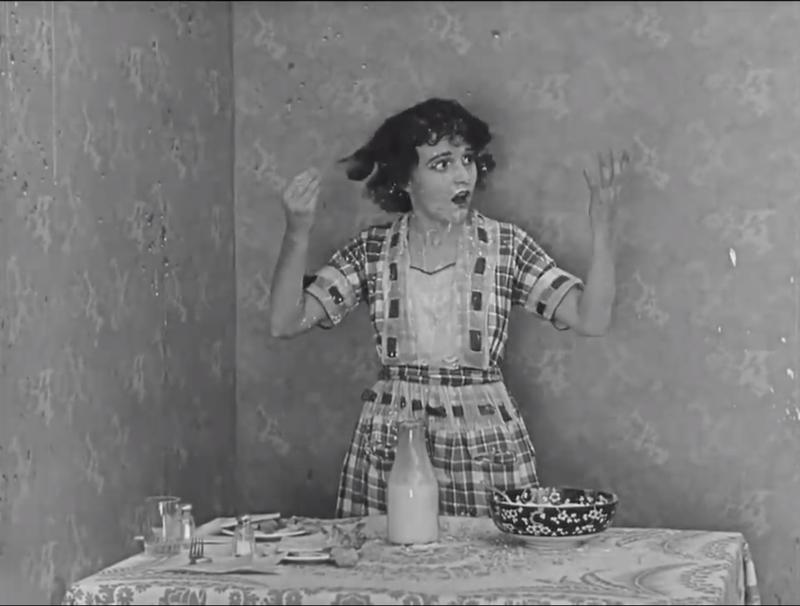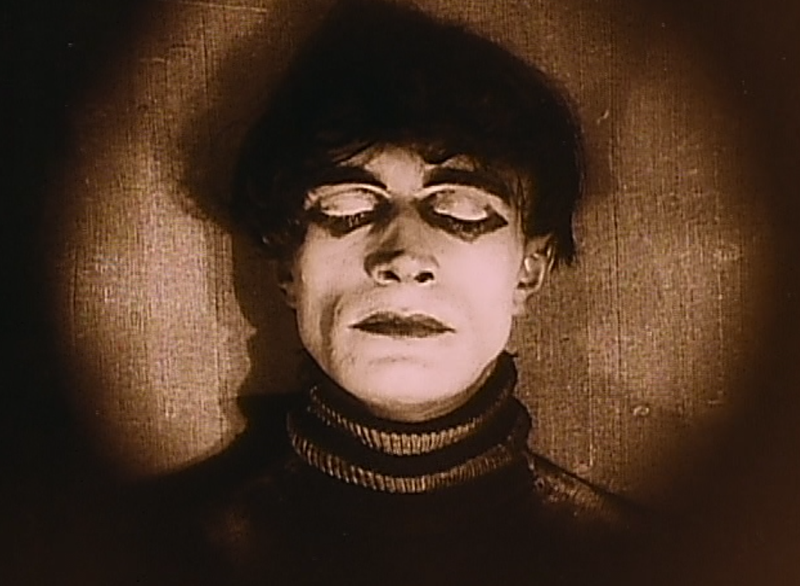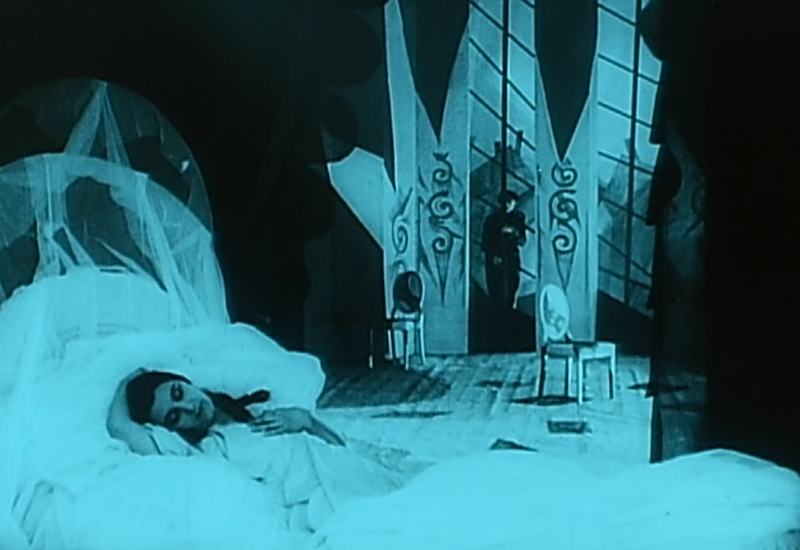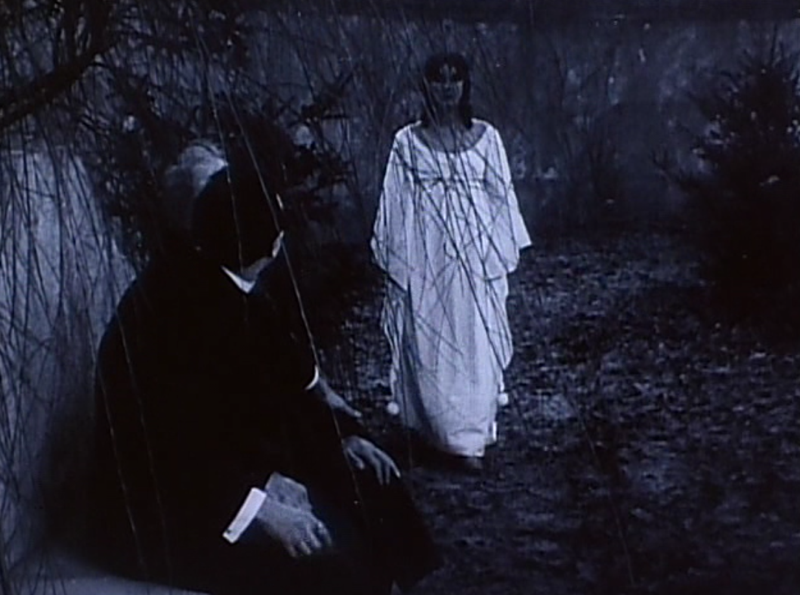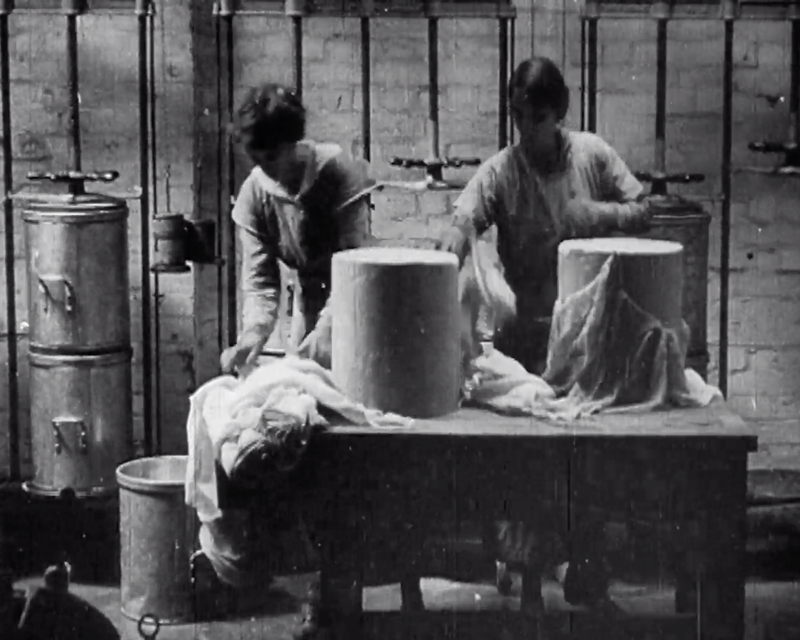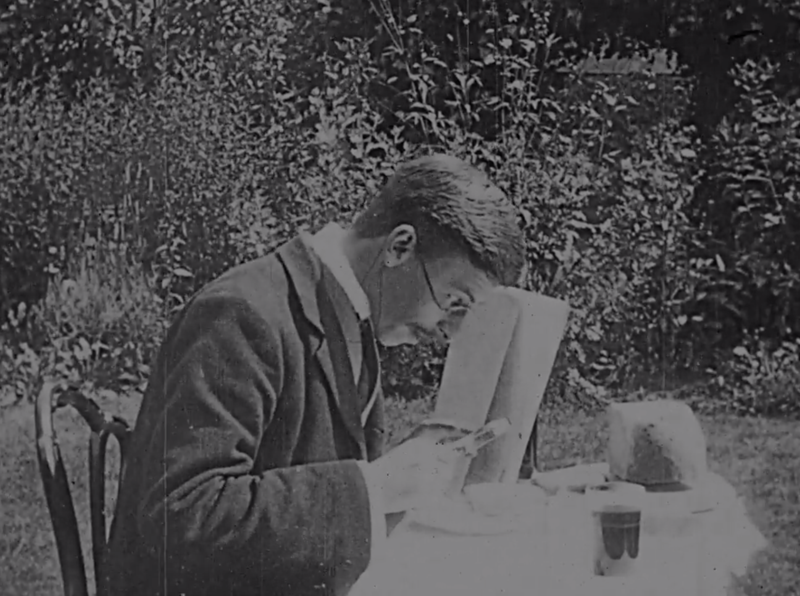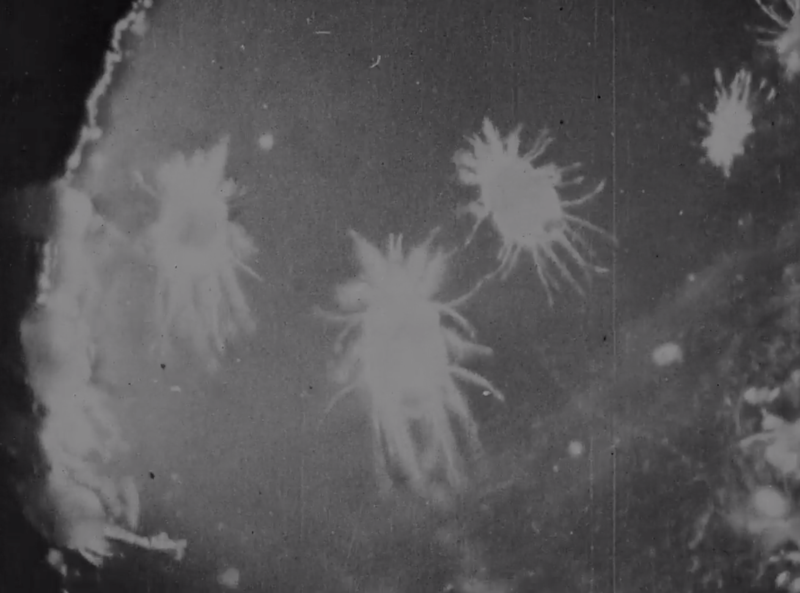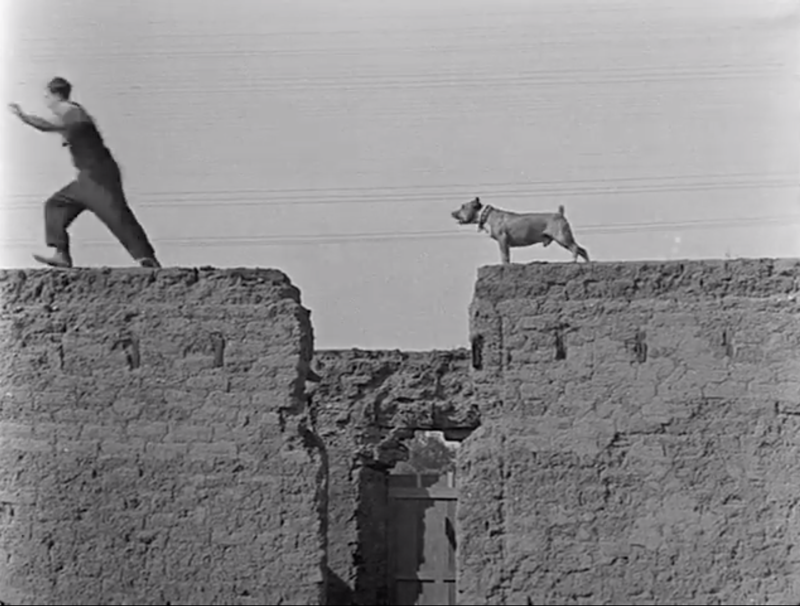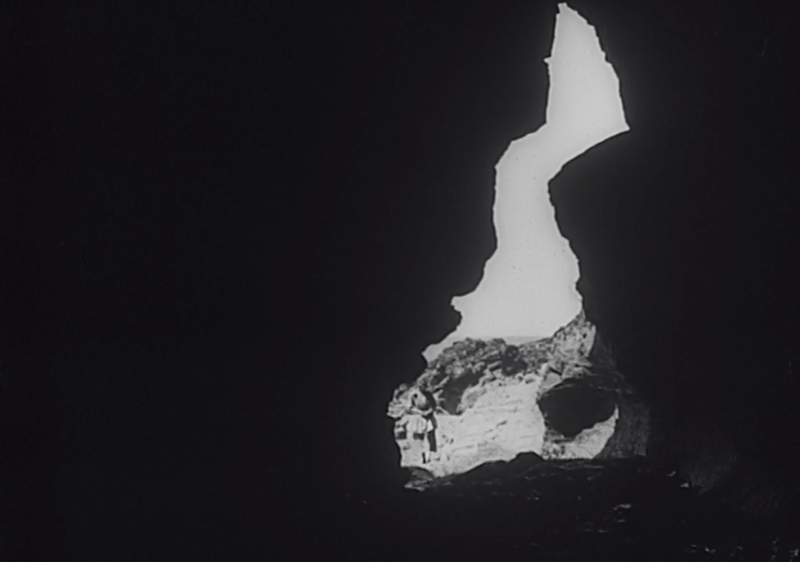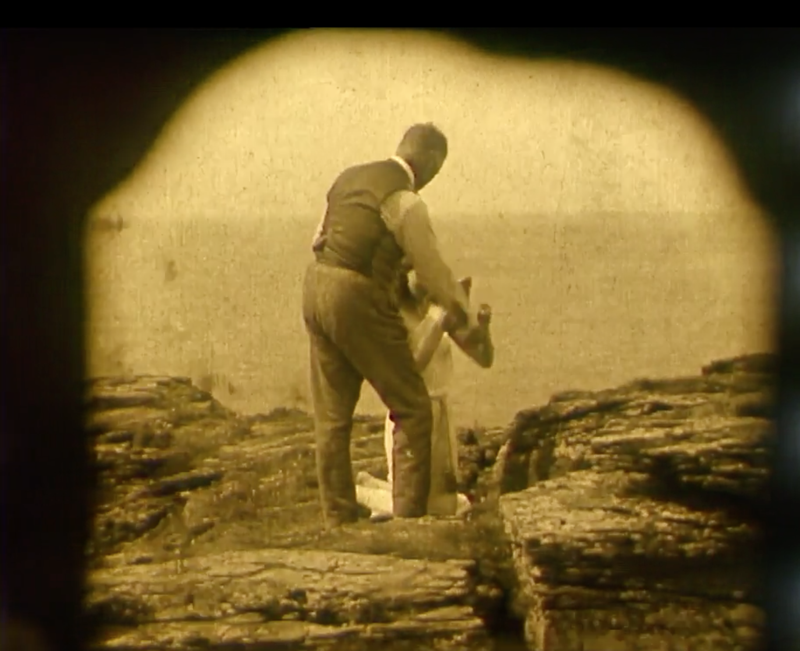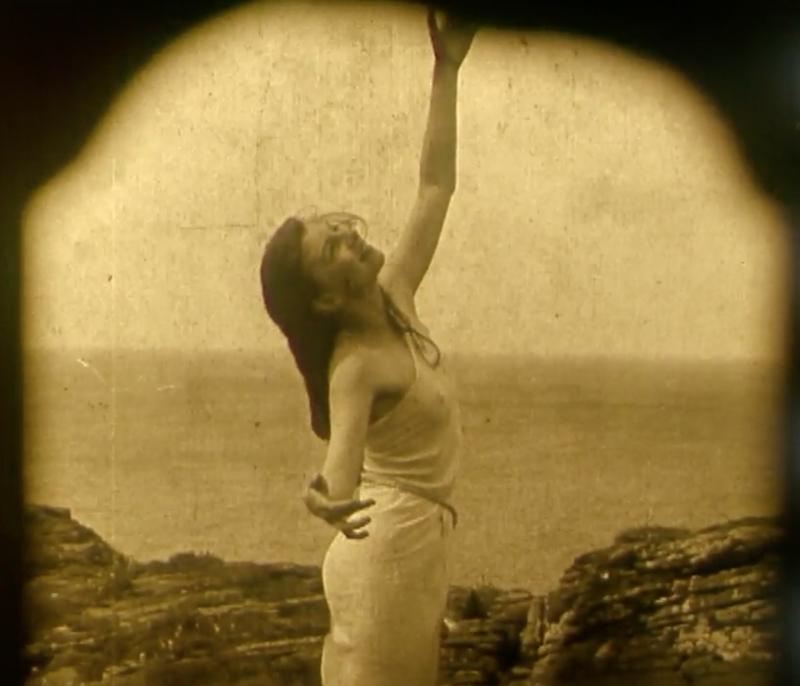Pirates Of 1920 is a (partially incomplete) science fiction film from 1911 directed by Dave Aylott and A.E. Coleby, set in the terrifying far future of 1920, where a group sky pirates roam the world causing fairly slow havoc in their zeppelin, robbing cruise liners and stealing beautiful women from their husbands-to-be.
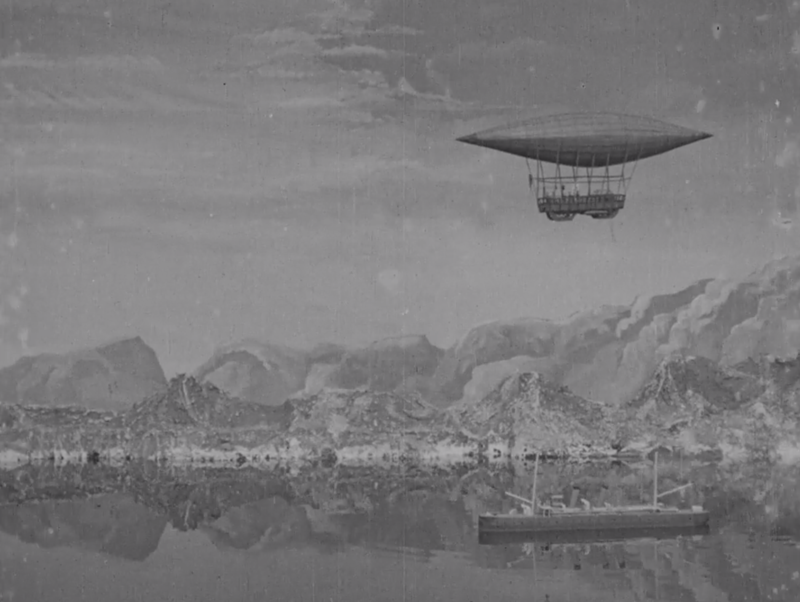
This future is 100 years old!
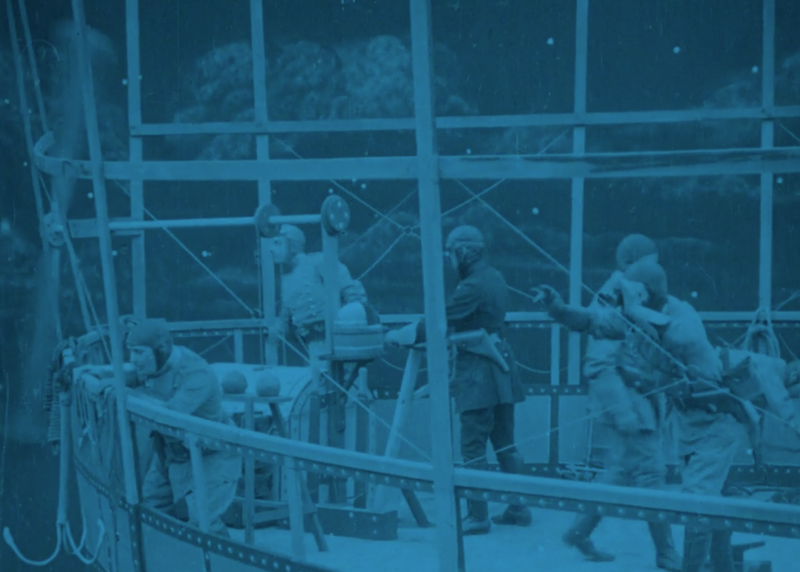
Anyway, I like the use of tints in different scenes, which is used to good effect, with blue for the night time scenes and an ominous red for an explosion (the model effects are great, too).
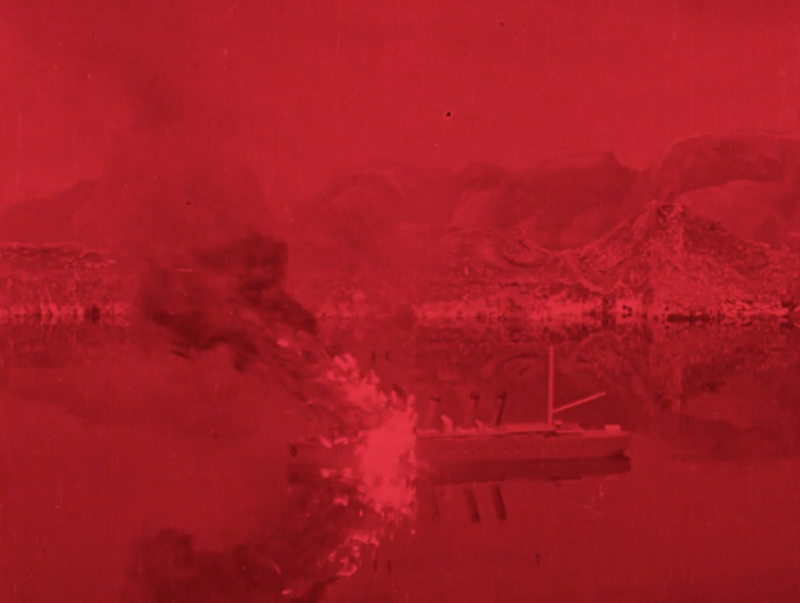
I also really liked this strangely specific not the sky pirates prisoner dropped out of the airship in an attempt to get help in her escape.

Unfortunately the film itself is a bit generic, and as the last five minutes of it have been lost, none of us will ever know if Jack Manley, our excellently named hero, successfully saves our plucky heroine from those dastardly pirates in the end or not.
But we can hope and we can dream.
__________
Notes
1. I watched this on the BFI Player here
2. There’s loads of things called Pirates of 1920 on youtube, but none of them actually seem to be this, for some reason.
3. The use of tinting in this reminded me of 20,000 Leagues Under The Sea (1916 version), which I saw a few years ago, and which had different tints depending on whether scenes were set underwater, on Captain Nemo’s submarine, or outside, an so on.
4. I saw that version with a live soundtrack by the band Fishclaw, and it was really great.
5. Unfortunately I can’t seem to find any snippets of their soundtrack anywhere
6. And also I can’t find whatever tinted version of the film they showed anywhere either, with every version on youtube or wherever in boring old permanent black and white.
7. Anyway, I enjoyed 20,000 Leagues Under The Sea very much and might watch it again soon.
8. Especially as I’m pretty sure it was while watching that that I decided to make this website.
9. And then took 4 years to actually get round to doing it.
10. But now I have, so everything is okay.
__________
Film Information
Title: Pirates Of 1920
Director: Dave Aylott and A.E. Coleby
Year: 1911
Duration: 17 minutes
Watch: BFI Player
